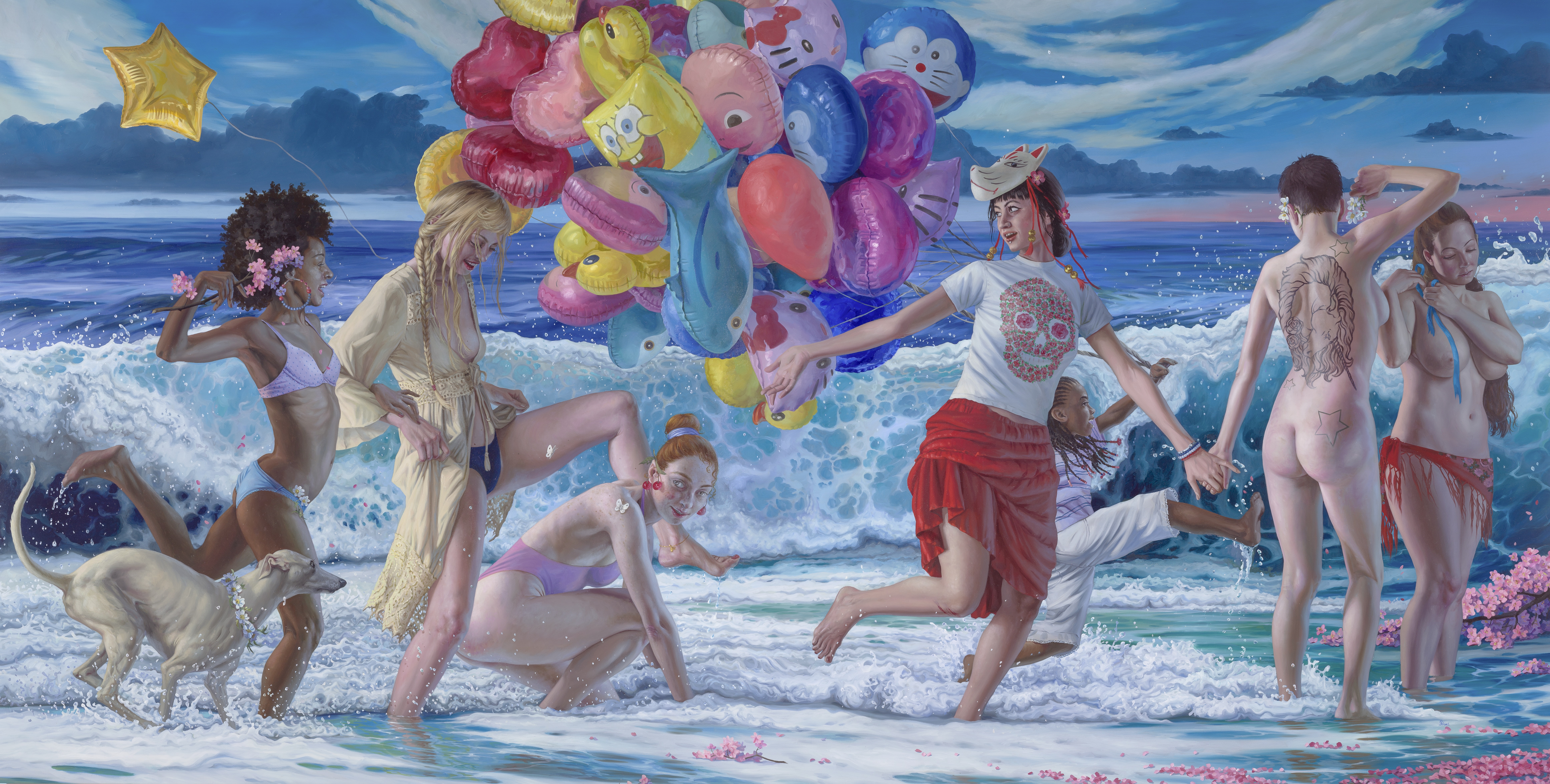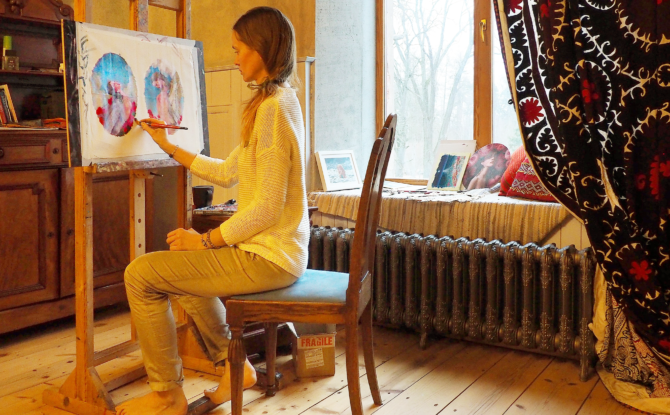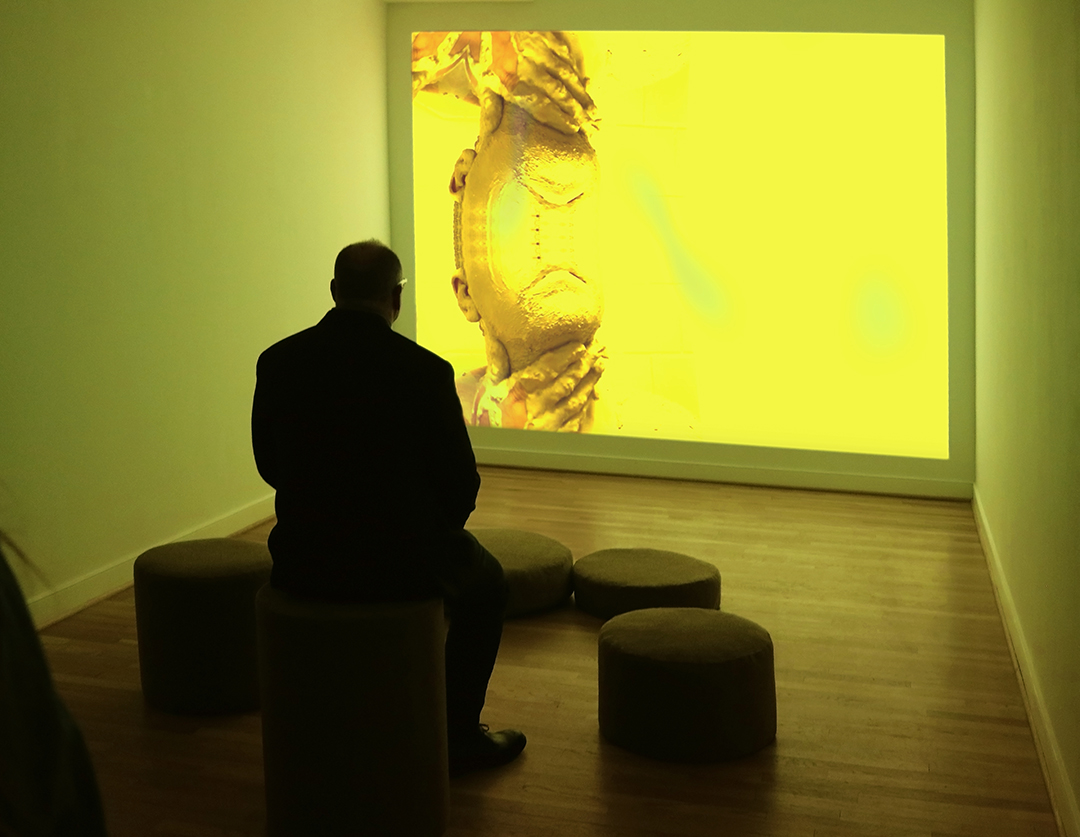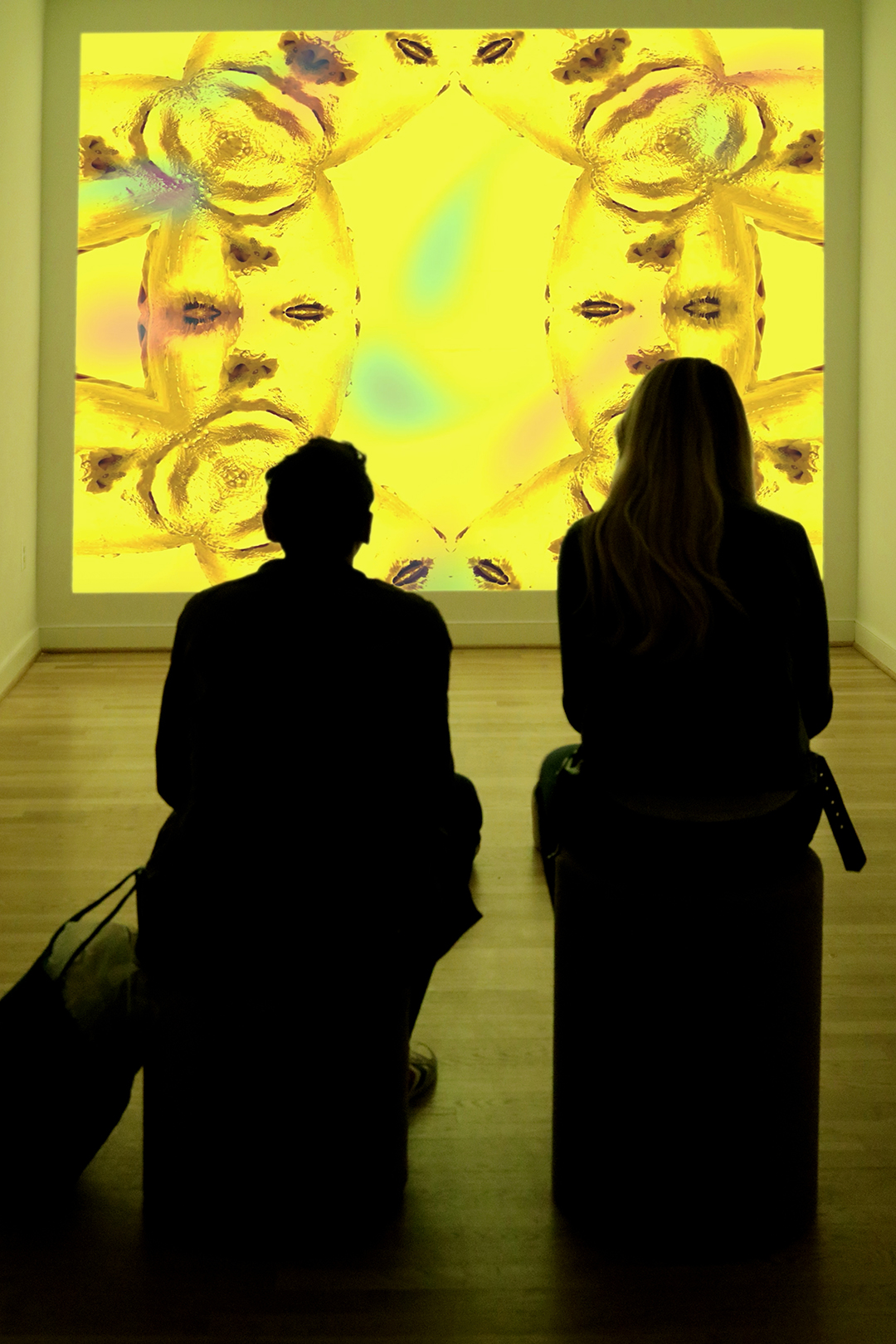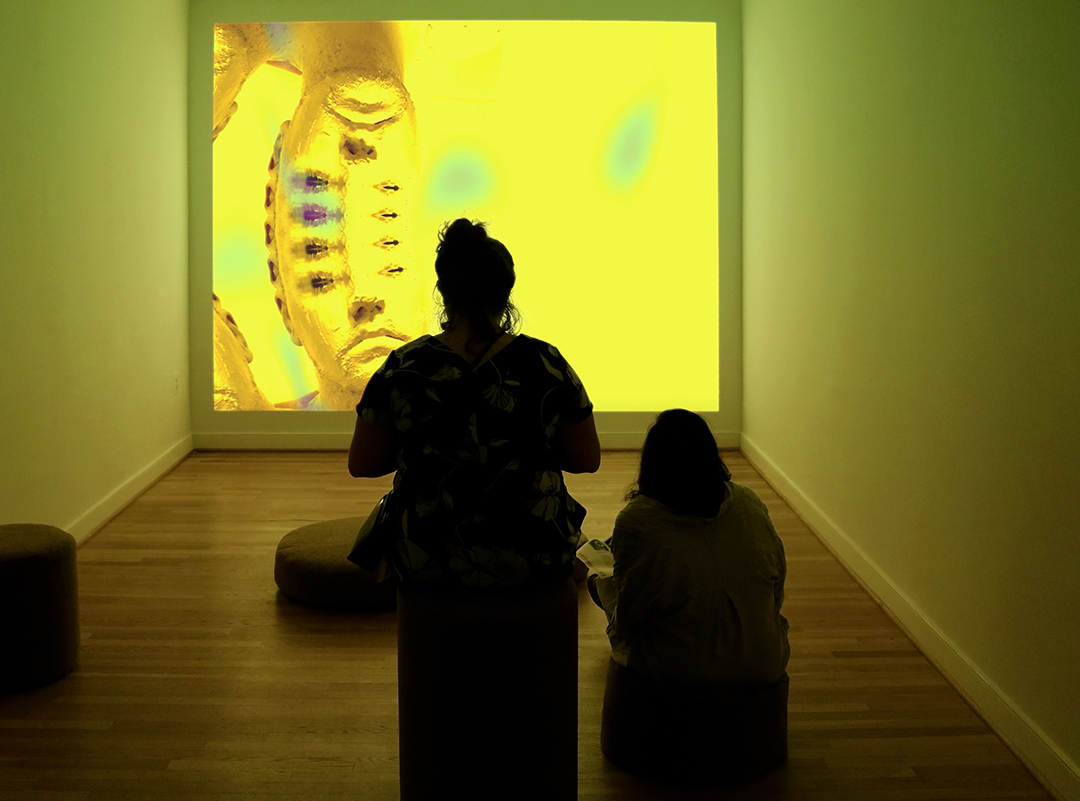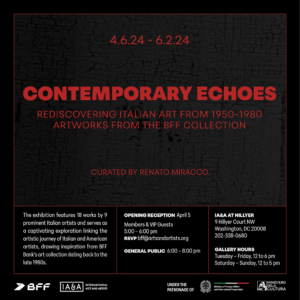Christopher Kojzar received a B.A. in International Affairs from George Washington University and an MFA in Intermedia and Digital Arts from the University of Maryland Baltimore County. A list of his residencies include the Creative Alliance in Baltimore, Crosstown Arts in Memphis, the Seventh Wave Residency in Rhinebeck, NY, and the Truth and Reconciliation Residency at the Santa Fe Art Institute.
Plainclothes Agenda was on view at Hillyer on August 2 – September 1, 2019.
What have you gained as an artist from each of your residencies?
When I do a residency I am quite aware that I am taking a risk, in a very paradoxical sense, to give up financial opportunities in order to develop my career as a professional artist. Most residencies are unpaid and even less give the artist the financial freedom to take an extended leave of absence from their home base. I am eager to do residencies because it promotes my vision for the arts outside of the MD/DC area. I get the opportunity to associate with like-minded peers who share a similar intent to use the arts as an engine for societal change. It is a habit of mine to build up a network with other professionals in order to spark dialogue, collaborate on projects, and actively promote not only myself but others as thought partners who share values of social justice, inclusiveness, and dynamic community involvement. I’ve been fortunate to get residencies that do offer some financial support, but more importantly, I get to experience making art in a completely different setting and be exposed to people who have completely different perspectives than I am normally accustomed to.

Why are you interested in public spaces? What drew you to the themes of observation and interaction?
On my part, the interactions in public are unsolicited and I dig into the “passer-by curiosity.” I want to provoke viewers into considering my interpretation of observation and encourage them to incorporate an “art of seeing” into their daily lives. We must, I contend, metaphorically stop, smell, see, absorb, and take note of the world, even if it causes us trouble. I create art from engagements because I notice how my body is marked and that others scrutinize my actions as an artist. If I take on drawing in a public space, I am inviting an interaction based on the assumption that the act requires attention. What’s more is that it also requires a commitment on my part to appear idle and expect interaction based on another’s assumption that I am behaving outside “the norm.”
As recently as May of 2017, Mannie Garcia, a freelance photographer in Wheaton, Maryland settled a seven year case where he was arrested for taking photographs of officers arresting two Hispanic men. Mr. Garcia felt that he had to make a case for our First and Fourth Amendment Rights regardless of the damage the incident inflicted upon his professional career. I do not believe that my First or Fourth Amendment Rights have been violated, but I am seeking to expose the vulnerability of these rights under the work that I do. Also, what is particularly unnerving is that as much fun as it is to show the farce of concern drawing in public elicits from authority, there is a point where being a black man who looks like a threat can pose serious consequences. When I choose to engage others, my anxiety is particularly acute because it relates to my race and gender. There is a certain amount of anxiety when I wear a body camera that can be mistaken for a bomb. Even my looks can be misread as suspicious. I am squinting, taking notes, and I seem intent on examining the world around me.
In regards to drawing as a performance art, I didn’t consider the work to be performance, or even activism until months after I documented my experience at the Oculus Hub and started a dialogue with Clark Stoekley. Stoekley made a name for himself by confusing law enforcement into believing that he was associated with Wikileaks during the Occupy Wall Street Movement in New York City. From our conversation, it became quite clear that I was performing and occupying spaces in a political context. Clark addresses the idea of art activism to signal a blend of satirical art and activism. It’s a method of improvisation and chance encounters with authority that defines the type of performance that he does, and I tend to align myself in a similar vein.
Further research also led me to Adrian Piper’s “Mythic Being” series where she dresses and plays the part of a black man with an afro walking the streets of New York. As a bi-racial artist, Piper uses her own body to insist upon the entrenchment of racism in American society, yet intellectualizes the experience after the act of the performance is carried out. The photo-documentation of “Mythic Being” is coupled with her writings and became particularly important to me because she’s developing a narrative for the performance. I consider my performance as non-performance and I contemplate the interaction after I play out the act. Piper also expands on how she disembodies herself to perform the role as “it becomes an object for me to contemplate, and simultaneously loses its status as element in my own personality or subject hood…‘The experience Mythic Being’ thus becomes part of public history, and is no longer a part of my own.” When I take on the act of drawing, it is to signal how certain types of behavior provoke an authoritative response. The performance lends to a much larger dialogue about the observational gaze and how surveillance can be traced to stereotypes or unconventional forms of expression in public space.
Why have you chosen to work with both digital mediums and traditional fine art mediums, such as drawing?
Whether I work with digital or traditional fine arts mediums, I am utilizing different toolsets to create conceptual art. Our minds should constantly be learning new tasks; when I started my graduate studies in Intermedia and Digital Art, I had to put my love of drawing and painting on hold in order to gain skills in videography, virtual reality, and first-hand research. My intention for drawing changed after I acquired new tool sets. Even though I draw for fun, I’m thinking about what it looks like to the outside observer. Digital mediums help me convey this idea. All artists nowadays incorporate several different mediums to get their point across or develop final iterations of their work. The digital mediums streamline the process. When I go out in public with the intent to create art for ‘Plainclothes Agenda’, I photograph, record audio, and write poetry so that I can document my surroundings. Even though the smartphone has drastically changed the way pedestrians navigate and observe their surroundings, I try not to belittle the importance of carrying what I consider to be a digital sketchbook. The drawing is artifact, its expression, the digital processes are refinement tools, challenging the mind to better understand the freedom I have to produce a clear message.

You use interactions with strangers and public spaces in your art. How do you decide where to work and who to talk to? Do you ever return to the same public spaces or seek out any specific individuals?
I first went to the Capitol Building to draw a quick sketch of the South Entrance and then into the Rayburn Offices to document interns working for House Representatives in Washington DC; I also sketched at places like casinos, airports, car repair shops, DMVs, shopping centers, and subway stations, visually discerning the balance between work and leisure. I made Baltimore, Manhattan, Mississippi, Santa Fe, Honolulu, Memphis, Washington DC, Karlovy Vary, Amsterdam, and Paris my testing grounds. In Paris, I chose Republic Square as documenting grounds because it holds as much significance as DC’s mall for both leisure activity and expression of free speech. It was the first location that I went to multiple times to draw. I also coordinated a drawing workshop with other artists from The Agency of Artists in Exile and asked them to willingly participate in conversation if anyone approached them. Nine times out of ten, someone approaches the artist rather than the other way around, and in my experience, I rarely talk to the same person twice.
The relationship of work to leisure and to the perception of idleness seeps into my identity as an artist. To me, even though there is a great deal of pleasure in making art, I consider a lot of my undertakings outside of the studio as work, mainly because I am employing the act of drawing to bring an awareness to the subject of observing in public. The drawings are an artifact or evidence to the interactions I seek out while I perform as a man who draws at leisure.
What was your inspiration behind “Plainclothes Agenda”? How do you see the article interacting and blending with the artwork in your exhibit?
“Plainclothes Agenda” was my graduate thesis at University of Maryland, Baltimore County, and Seventh Wave Magazine published a truncated version of it in 2018. This project is coming up on its third year, and is rooted in a privilege of engaging with a diverse group of people. I am a visual artist, yet more succinctly, I am a documentarian. The writing shows process, a bit of my mental state, and what I don’t take for granted. Research-based methodology also lets me contextualize what I make and adds substance to it. But, quite honestly, I fell into the subject matter. At first, travel and urbanity inspired my art practice, but then I just became fixated on the extraordinarily mundane. Something always sparked happiness in me when I documented day-to-day stuff. When I began to intellectualize the experience, it was Keith Tester’s “The Flâneur” and Simone Browne’s “Dark Matters: On the Surveillance of Blackness” that added form to my thought process.
My research on nineteenth-century flâneurism and its connections to today’s society provided a structured code of conduct, one that rang true in my art practice. Because I lived in France at many different periods of my life and speak the language, it was almost like flâneurism validated my artistic and academic motivations. And the flâneur’s habits, like strolling at a deliberately leisurely pace and recording urban images was basically me in a nutshell. In today’s French lexicon, the flâneur is just someone who walks around a city, and the direct literal translation of the verb into English is ‘to loiter’. Because there’s a discriminative historicity in loitering laws, I wanted to take advantage of it. Combining flânuerism, loitering, drawing, and writing gave me a baseline to investigates urbanity, and what’s more, gave me a power to satirize my colorful interactions with strangers and security officers. So this insertion of language, writing, and flâneurism into the exhibition is almost like reminders to a way of life that I strive to embody.

